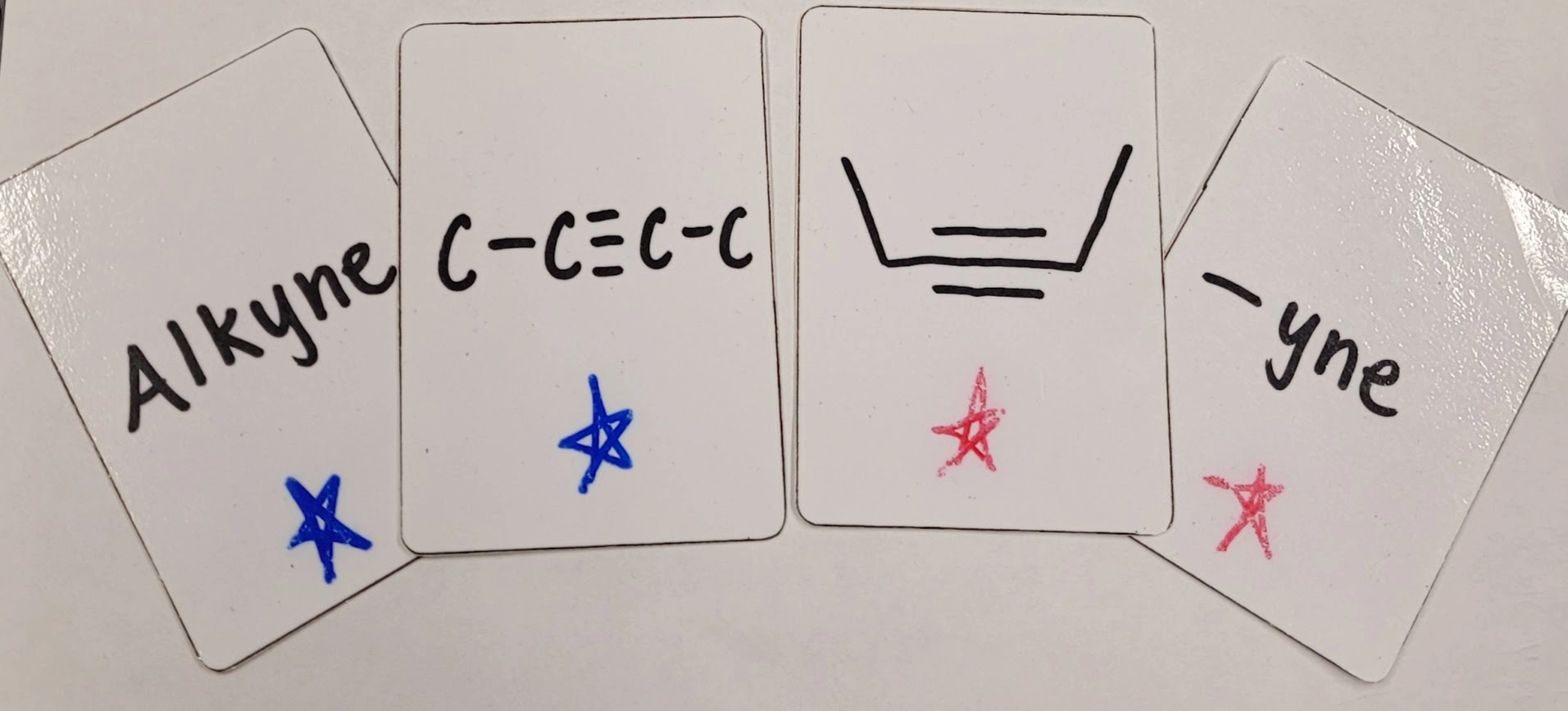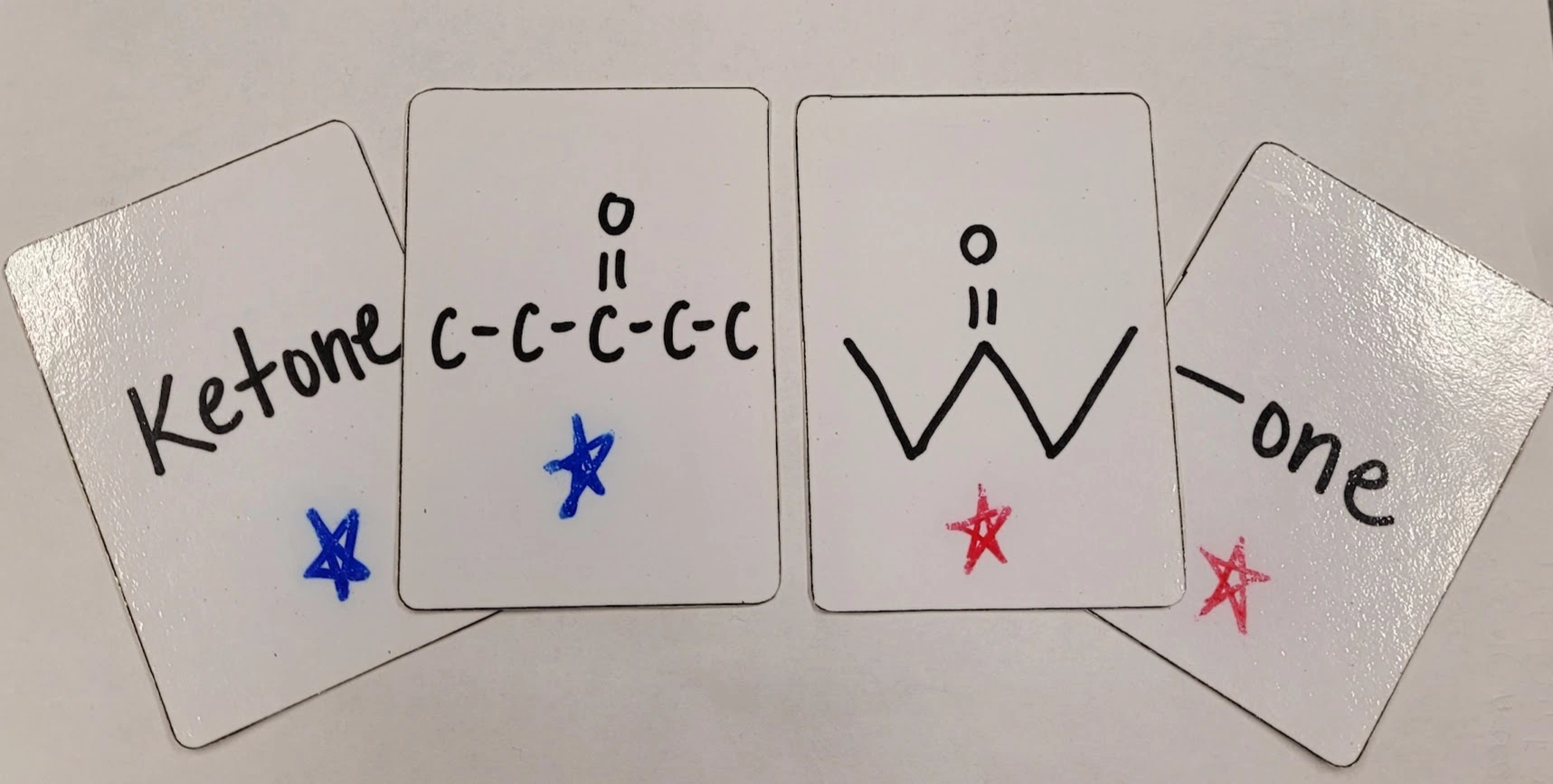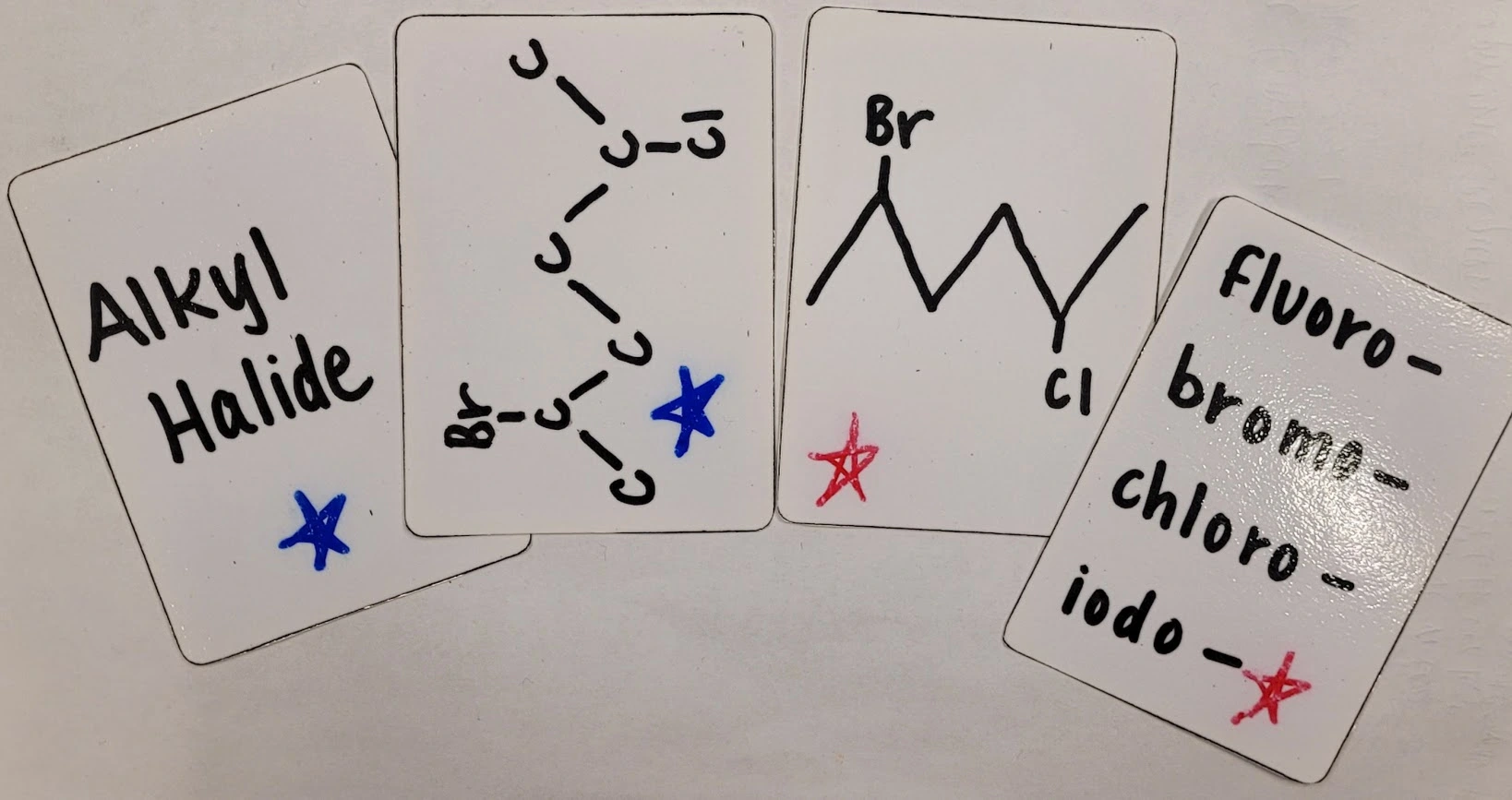Organic Chemistry Functional Group Playing Cards
OVERVIEW
To help students learn to recognize common organic functional groups when given chemical formulas and names, students can use an organic chemistry functional group playing card deck to play any card game that can be played with a traditional card deck.
The card sequence of a traditional card deck (King, Queen, Jack, etc.) has been replaced with 13 common organic functional groups. The suits (hearts, clubs, spades, diamonds) have been replaced with names and representations for each organic functional group.
OBJECTIVE
Students will work in teams to play simple card games in order to learn to name and identify the main organic functional groups. As students' identification skills improve, they can choose to play more complicated card games. Depending on the game selected and number of players, it can take between 20 and 40 minutes to play a card game.
LEARNING GOALS
- Students will learn the names of organic functional groups.
- Students will recognize the different ways that organic functional groups can be represented.
MATERIALS
Template for Functional Group Playing Cards
Functional Group Playing Cards (Student Worksheet)
TEACHERS: Request an Answer KEY
APPLICATION to NEXT GENERATION SCIENCE STANDARDS
HS-PS1-1: Predict how different atoms form bonds, which is crucial for understanding functional groups in organic molecules.
HS-PS1-3: Explore how functional groups impact molecular interactions, such as hydrogen bonding in alcohols or dipole interactions in carbonyl-containing molecules.
HS-LS1-6: Study how functional groups like Amines, carboxyl groups, and hydroxyl groups contribute to the structure and function of biomolecules (e.g., proteins, lipids, carbohydrates).
CROSSCUTTING CONCEPTS & SCIENCE and ENGINEERING PRACTICES:
- Patterns: Recognizing patterns in molecular structures (e.g., functional groups).
- Structure and Function: Exploring how the structure of organic molecules determines their properties and reactivity.
- Energy and Matter: Investigating how functional groups influence the flow of energy in chemical and biological systems.
REFERENCE
Welsh, M. J. (2003). Organic functional group playing card deck. Journal of Chemical Education, 80(4), 426. (https://pubs.acs.org/doi/pdf/10.1021/ed080p426)



